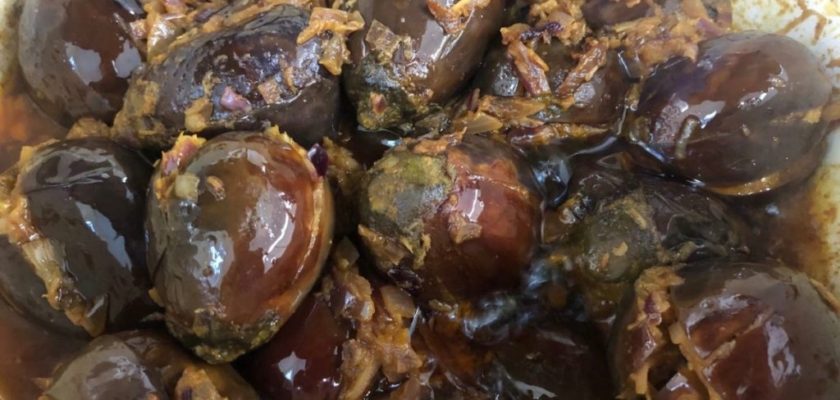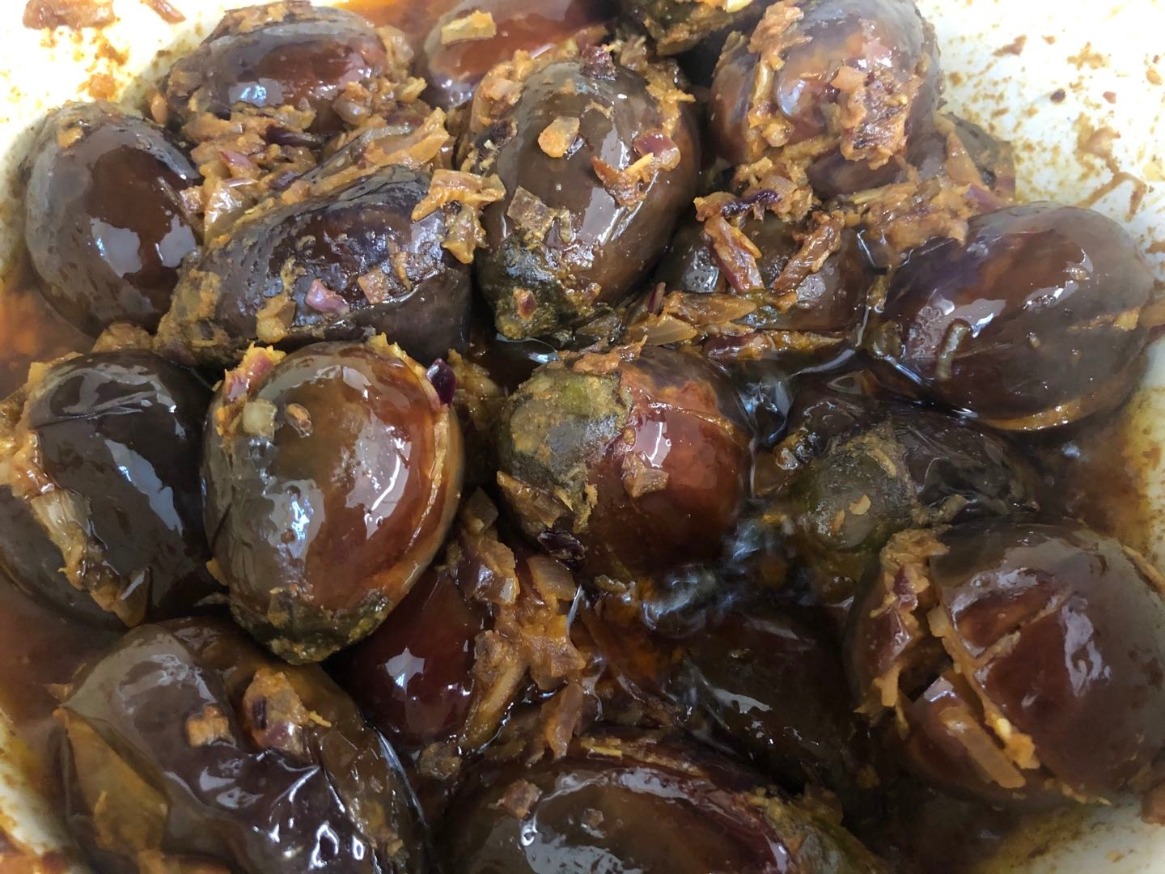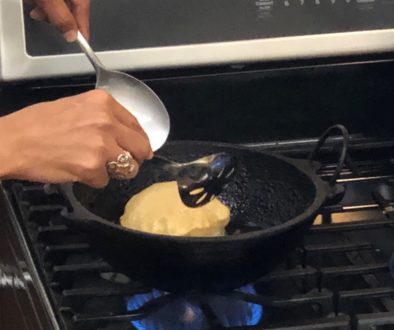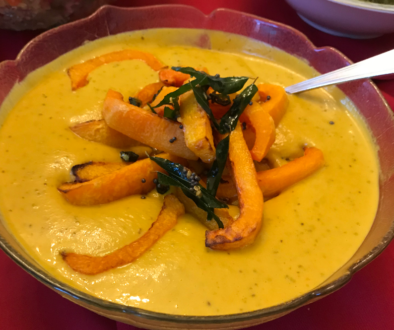A Respite from Monotonous, Repetitive Vegetables
By Annie Kang

Eggplant Curry
In 2020, I began teaching an Indian food, blogging and photography class at Willliams College, Massachusetts. At each session, students prepared a protein, lentil, vegetable, and bread or rice dish. We concluded the class by sitting around a table, talking and eating all the delicious food prepared.
The class included a Jackson Heights restaurant tour and we observed two chef’s – from Drunken Munkey and Rahi – demonstrate their cooking skills. Below are some of my student’s blog posts.
Green beans, broccoli, carrots, Brussel sprouts, and broccoli again… Used to the extensive variety of fruit and vegetables available in east and southeast Asia, I have always felt unsatisfied with the monotonous, repetitive selection of vegetables at dining halls. In fact, the lack of variety in vegetables and in the way veggies are made has been one of my greatest complaints of eating in Williamstown. As I walked into the kitchen on Tuesday, my eyes lit up when I saw a colander filled with an unfamiliar vegetable that looked like, and indeed were, baby eggplants. One of my favorite vegetables, eggplant can be cooked so many ways, as it tastes delicious boiled, steamed, grilled, baked, stir fried, or even in a Sichuan-style cold dish. But I was more looking forward to tasting and cooking an Indian eggplant dish, since the only other that I’ve had is the eggplant masala at Spice Root (which I do like).
To make the stuffing for the baby eggplants, we started with marinating diced red onions in oil with desiccated coconut and the trinity of spices—chili powder, turmeric, and coriander powder. After seasoning with salt to taste, we left the concoction to soak for an hour in a large quantity of oil, since eggplants require a lot of oil. We then prepared the washed eggplants by cutting off the stem and making deep vertical and horizontal slits, forming a cross shape, that would hold the marinated onions. Using our hands, we stuffed the baby eggplants as much as possible, so that the onion fillings were overflowing from the crevices. Once stuffed, we fried the eggplants in a Dutch oven for a long time, mixing gently but regularly to allow for an even cook


I was very curious to see how the baby eggplants would taste differently to the more common, regular-sized eggplant. What I love about eggplant is the tender, mushy texture and its ability to absorb the flavors that it is cooked in. With a baby eggplant, I was hoping that the smaller vegetable would be even more tender and absorb more of the flavor of the spices. Reality did not disappoint.
I was even more exited the next day when I saw that we were going to work with tindora, a vegetable that I had never encountered before. Commonly known as ivy gourd, tindora (or coccinia grandis) is a fruit of a tropical vine that grows in southern India and commonly eaten in Indian cuisine. With a gherkin-like appearance, the fruit has a crisp texture when raw and is often eaten as a curry by stuffing it with masala and deep-fried or sautéed.


We started preparing the tindora by cutting the vegetable length-wise into long and skinny quarters, along with dicing some onions. After heating some oil in the pot, we sautéed the diced onions until they were softened. Then we added the tindora, and the trinity of spices for southern Indian cuisine (the same three spices we used for the baby eggplant) into the mixture. Adding salt to taste, we let the dish cook until the tindora was no longer crunchy but tender, adding in curry leaves at the end. To plate, we sprinkled some fresh coriander on top.
Annie Kang is a senior at Williams College, majoring in both History and French . Growing up in Hong Kong and Shenzhen, China, she can often be found trying new restaurants in the city and assisting her mom in the kitchen. An avid traveller, she loves tasting foods from different cuisines, and exploring restaurants and food cultures.







